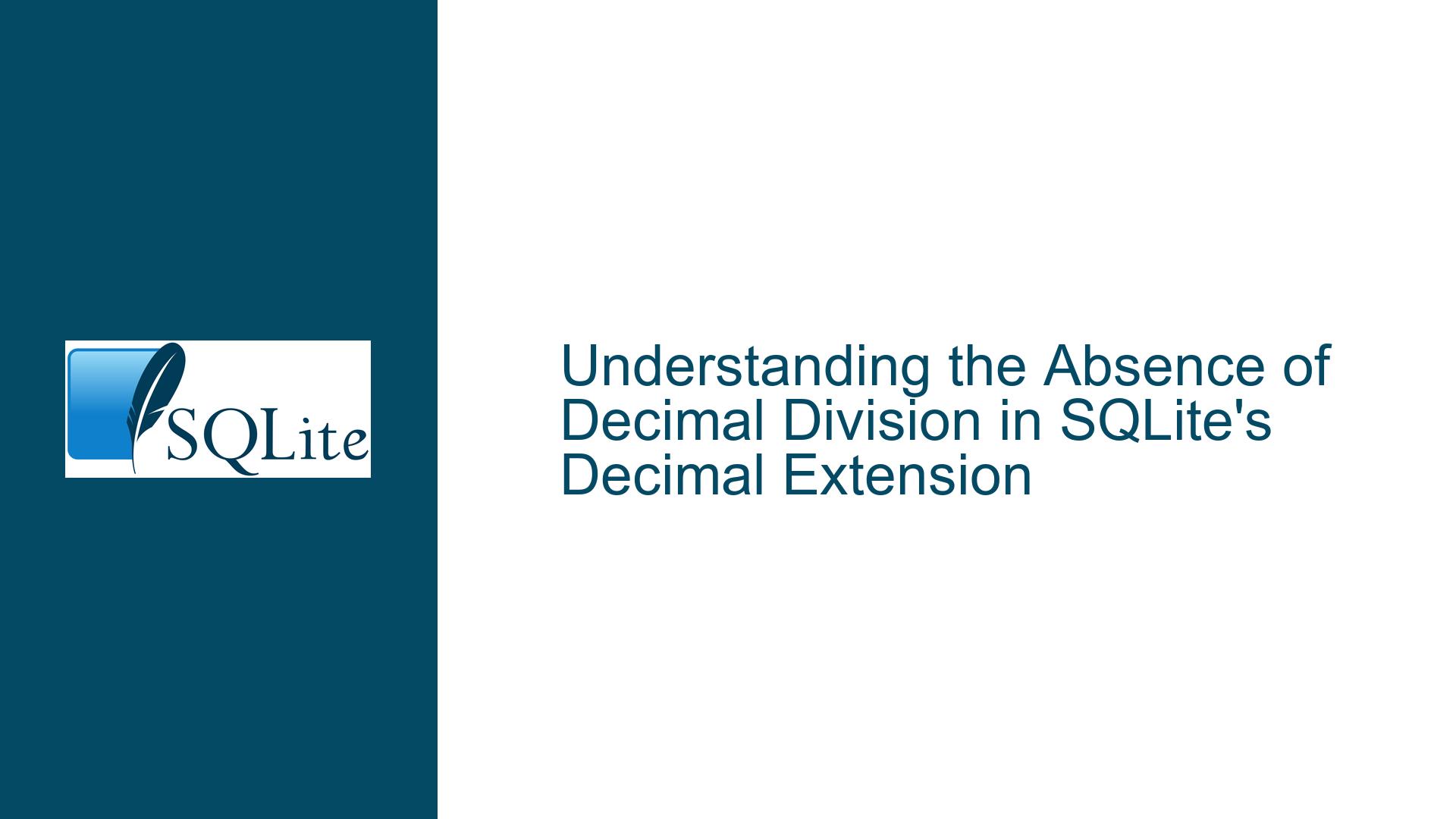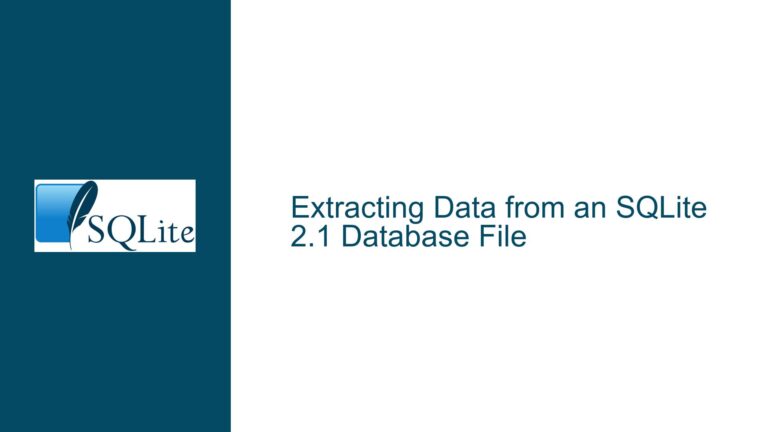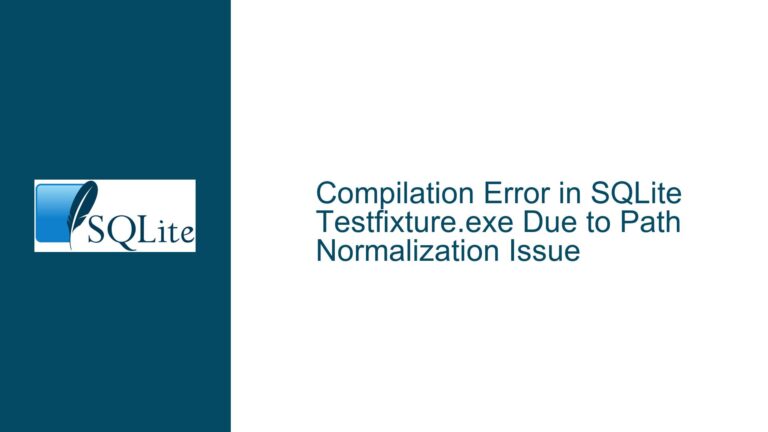the Absence of Decimal Division in SQLite’s Decimal Extension
The Challenge of Implementing Decimal Division in SQLite
The SQLite database engine introduced a decimal extension to handle decimal arithmetic with precision, addressing the limitations of floating-point arithmetic. This extension provides functions like decimal_add, decimal_sub, and decimal_mul for addition, subtraction, and multiplication, respectively. However, one notable omission is the decimal_div function, which would handle division. The absence of this function is not an oversight but a deliberate design choice rooted in mathematical and computational complexities.
Decimal arithmetic is designed to maintain precision, especially in financial and scientific calculations where rounding errors can lead to significant discrepancies. While addition, subtraction, and multiplication operations on decimal numbers yield results with finite precision, division introduces a unique challenge. Division of two decimal numbers does not always result in a finite decimal number. For example, dividing 1 by 3 results in an infinite repeating decimal (0.333…). This inherent property of division complicates its implementation in a system designed to maintain precision.
The SQLite decimal extension aims to provide exact results for arithmetic operations, but division often produces results that cannot be precisely represented as finite decimals. This limitation is not unique to SQLite; it is a fundamental characteristic of decimal arithmetic. The extension’s design philosophy prioritizes accuracy and predictability, which are compromised when dealing with non-terminating decimal results from division.
Mathematical and Computational Constraints of Decimal Division
The primary reason for the absence of a decimal_div function in SQLite’s decimal extension lies in the mathematical properties of decimal numbers. Decimal numbers are represented in base 10, and their precision is determined by the number of digits after the decimal point. While addition, subtraction, and multiplication operations on decimal numbers yield results that can be precisely represented within a finite number of digits, division does not share this property.
When dividing two decimal numbers, the result may be a repeating or non-terminating decimal. For instance, dividing 1 by 7 results in 0.142857142857…, a repeating decimal that continues infinitely. In a system designed to handle finite precision, representing such results accurately is impossible. This limitation is not merely a technical hurdle but a fundamental constraint of decimal arithmetic.
Furthermore, the precision of the result of a division operation is not always predictable. The number of digits required to represent the result accurately can vary significantly depending on the operands. For example, dividing 1 by 2 yields 0.5, a finite decimal, while dividing 1 by 3 yields 0.333…, an infinite repeating decimal. This unpredictability complicates the implementation of a division function that adheres to the precision requirements of the decimal extension.
Another consideration is the computational complexity of implementing decimal division. Unlike addition, subtraction, and multiplication, which can be performed using straightforward algorithms, division requires more sophisticated techniques to handle non-terminating results. Implementing such algorithms while maintaining the performance and efficiency expected of SQLite is a non-trivial task.
Workarounds and Best Practices for Decimal Division in SQLite
While SQLite’s decimal extension does not provide a decimal_div function, there are workarounds that can be used to perform division operations while adhering to the spirit of decimal arithmetic. One such workaround involves using multiplication with the reciprocal of the divisor. For example, instead of dividing a decimal number by another, you can multiply it by the reciprocal of the divisor. This approach leverages the decimal_mul function to achieve a result that approximates division.
Consider the following example: To divide a decimal value A by a divisor B, you can use the expression decimal_mul(A, 1.0 / B). This expression multiplies A by the reciprocal of B, effectively performing the division operation. However, it is important to note that this method does not guarantee exact results, especially when the divisor has prime factors other than 2 or 5. In such cases, the result may still be a non-terminating decimal, but the precision can be controlled by limiting the number of decimal places in the result.
Another approach is to use SQLite’s built-in floating-point arithmetic for division and then convert the result back to a decimal. While this method introduces the risk of rounding errors inherent in floating-point arithmetic, it can be useful in scenarios where exact precision is not critical. For example, you can use the expression CAST(A / B AS DECIMAL(precision, scale)) to perform the division and cast the result to a decimal with the desired precision and scale.
When using these workarounds, it is essential to understand their limitations and choose the method that best suits your application’s requirements. For financial calculations where precision is paramount, the multiplication-by-reciprocal method is preferable, despite its potential for inexact results. In contrast, for scientific or statistical calculations where some degree of rounding error is acceptable, using floating-point arithmetic may be more practical.
In conclusion, the absence of a decimal_div function in SQLite’s decimal extension is a deliberate design choice driven by the mathematical and computational challenges of decimal division. While this limitation may seem restrictive, there are viable workarounds that allow you to perform division operations while maintaining the precision and accuracy that the decimal extension provides. By understanding the underlying constraints and choosing the appropriate method for your use case, you can effectively leverage SQLite’s decimal extension for a wide range of applications.






